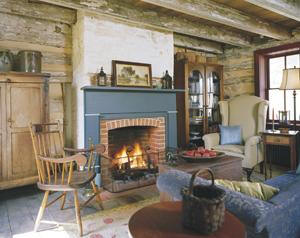 |
|
Cost and Reputation Are Key in Selecting Renovation Expertsby KRISTEN ARMSTRONG, Staff Writer |
|
| Owners of historic homes often
have a dilemma when it comes to renovations and additions: how to
maintain the building's character while incorporating modern
conveniences. Mark Buchanan of Neumann Lewis Buchanan Architects recently talked to Middleburg Life about his firm's approach to solving this dilemma, and had tips for anyone thinking of renovating or adding to their home. From more closet space to larger master bedrooms to contemporary kitchen designs, the firm does its best to renovate and add to historic homes “in a seamless way, to give a timeless character,” Buchanan said. “Most often, it's spacial and functional reasons to build additions,” he said. “People with older homes just need more space or better use of space.” Because many historic homes are part of a family's legacy, his firm takes great pains to preserve the integrity of the structure's original design and period details. One project Buchanan particularly enjoyed working on was an 1818 stone farmhouse in The Plains. His client's father had added on to the building in the 1950s and '70s, but the additions were not historically congruous with the rest of the home. Neumann Lewis Buchanan Architects was able to restore the home to its authentic state. The client also worked with Old World craftsman to create an historically accurate interior design, with mouldings made from salvaged materials, reclaimed antique heart-of-pine flooring and many other period details. Fun projects for Buchanan are ones in which “the client recognizes that he has the bones of a classic home . . . that is probably longing for its original character.” But what are some issues to consider before jumping into a renovation or addition? First and foremost, cost. Not only are renovations and additions a serious investment in themselves (the firm's projects range from approximately $750,000 to $3 million), but other unexpected costs can weasel there way in. “Cost is always an issue,” Buchanan said. “There are unforeseen costs in renovation that don't necessarily have to do with adding space.” To avoid financial complications, the home's structural stability and energy efficiency should be addressed before diving in to the project. “It's good to consult with an architect, and sometimes even a general contractor, to not just assess your spatial needs, but also safety and functional aspects,” Buchanan said. Scale is another important issue to consider, especially when planning an addition. Since most older homes are smaller in size than homes built today, owners of historic properties must keep in mind that their addition should be in proportion with the rest of the home. “Try not to over-scale,” Buchanan said. “Don't put a big box on a small box. You have to recognize this is an addition. The tail should not wag the dog on this, and the addition is the tail.” Homeowners interested in renovations or additions also should keep in mind that it can be a lengthy process. Depending on how extensive the project is, sometimes it can take up to a year before construction starts, so Buchanan suggests that you “allow adequate amount of time to get wheels in motion.” Choosing the right architect is key to the success of a given project, and sometimes it will take a couple tries before you find the perfect one. “Always interview more than one architect,” Buchanan said. “There are three or four architects for any given project that would be worthy of consideration.” Also important is to find an architect that works well with your personality, is attuned to what you want aesthetically and knows the local builders. But probably most crucial is experience. “Renovation work is more complicated than new work,” Buchanan said. “The more experience an architect has with previous additions, the better of you'll be at not being surprised at cost.” For more information and samples of Neumann Lewis Buchanan Architects' work, see the Web site at www.nlbarchitects.com. |
 The interior of the historic 1835 cabin was completely renovated. Here in the living room, log walls were left exposed, to convey the cabin’s right interior. The cabin is situated on a bluff overlooking the Potomac River, not far from Shepherdstown. (Photo by Walter Smalling) |